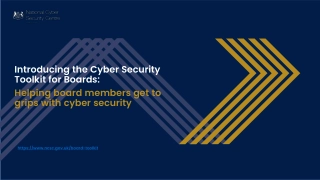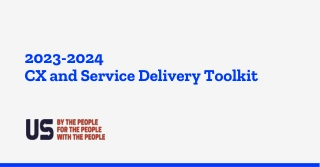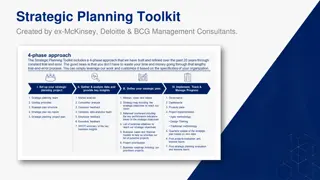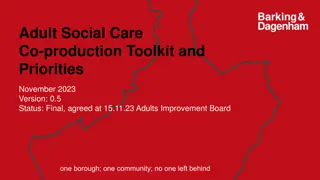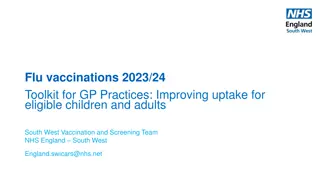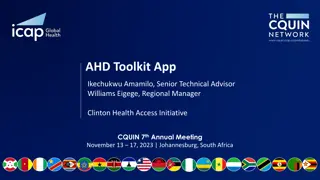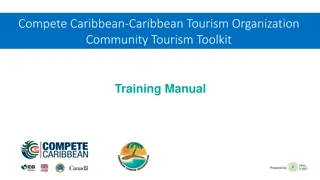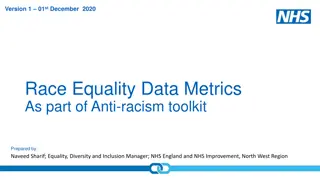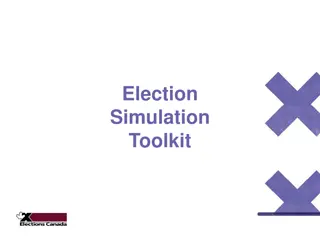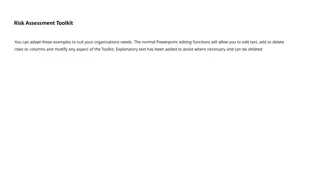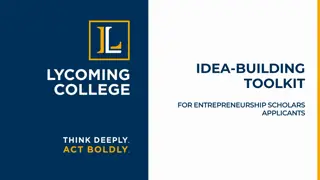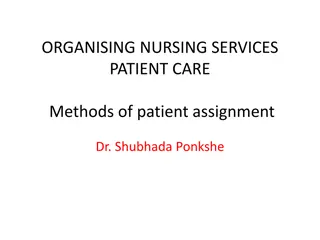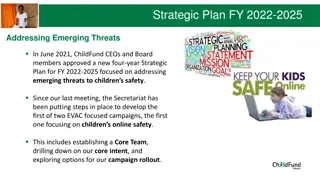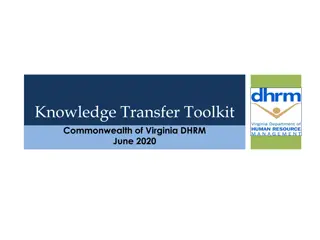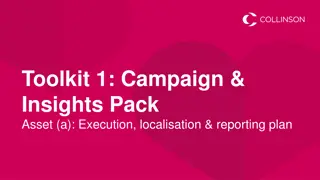
Patient Evacuation Toolkit Implementation Webinar Insights
Gain insights into the implementation of the Patient Evacuation Toolkit through expert speakers sharing post-Sandy efforts, challenges, and the development of the Patient Movement Workgroup.
Download Presentation

Please find below an Image/Link to download the presentation.
The content on the website is provided AS IS for your information and personal use only. It may not be sold, licensed, or shared on other websites without obtaining consent from the author. If you encounter any issues during the download, it is possible that the publisher has removed the file from their server.
You are allowed to download the files provided on this website for personal or commercial use, subject to the condition that they are used lawfully. All files are the property of their respective owners.
The content on the website is provided AS IS for your information and personal use only. It may not be sold, licensed, or shared on other websites without obtaining consent from the author.
E N D
Presentation Transcript
1 PATIENT EVACUATION TOOLKIT IMPLEMENTATION WEBINAR Thursday, June 22, 2017
Todays Speakers Genesis and Overview of the Patient Evacuation Toolkit Jenna Mandel-Ricci, Vice President, Professional and Regulatory Affairs, GNYHA & Tim Styles, Medical Director, Bureau of Healthcare System Readiness, NYC Department of Health and Mental Hygiene Using Toolkit Tools to Advance Hospital and Health System Readiness Craig Simpkins, Regional Director, Occupational and Environmental Safety, and Colleen Lyons, Chief Information Officer, Lenox Hill Hospital Kevin Chason, Clinical Director, Emergency Management, The Mount Sinai Health System
Post-Sandy: Efforts to Address System Gaps 3 Efforts Specific to Healthcare Overall Efforts Introduction of new evacuation zone framework Six rather than three zones; take into account storm bearing, surge, and still water flooding Revisions to coastal storm plans Development/launch of eFINDS patient tracking system Significant improvements made to the Healthcare Evacuation Center; application development and testing Focus on decision making process and timeline for healthcare evacuation Extensive analysis of healthcare facility receiving capacity
Additional Issues That Make Large-Scale Patient Evacuation Challenging 4 Finding appropriate beds for certain patients was particularly challenging during Hurricane Sandy Concerns about continuity of care for very sick patients during evacuations that can take several hours Recognition that subject matter experts in hospitals were best positioned to address these issues The Patient Movement Workgroup is born!
Patient Movement Workgroup: Initial Development 5 Co-led by NYC Department of Health and Mental Hygiene and GNYHA Created initial workgroup agenda based on conversations with key staff at hospitals most impacted by Hurricane Sandy Assembled representatives from a broad range of hospitals large health systems as well as stand-alone hospitals + representatives from government agencies involved in evacuation planning and response Monthly, in-person meetings with conference line option; met from early 2015 through 2016 After each meeting, detailed notes were sent to entire group, and work was done to advance documents and processes between meetings
Patient Movement Workgroup: Scope of Projects 6 Began by developing standardized bed definitions to facilitate bed matching at a regional level From work on this issue, a number of other challenges emerged that the group sought to address, including: Facilitating sharing of critical medical information during transport Increasing post-transfer PHI exchange between sending and receiving facilities Best practices related to emergency credentialing of healthcare personnel (will not touch on this during today s presentation) Initial workgroup members included emergency managers and clinical leaders; pulled in other subject matter experts as necessitated by our work These included transfer center staff, heath IT experts, and medical staff specialists
1. Standardized Bed Definitions to Facilitate Bed Matching: Concern and Goal 7 Goal Concern During Hurricanes Sandy and Irene, different understandings of commonly used bed type terms compromised the ability of involved staff to identify appropriate beds/resources for patients that needed to be evacuated. Create standardized bed definitions that can be used as a common vocabulary regionally or statewide to facilitate appropriate bed matching. Put another way, an ICU bed is not an ICU bed is not an ICU bed across different types of institutions.
Standardized Bed Definitions to Facilitate Bed Matching: Initial Approach Using Existing Classifications 8 NYS Licensed Bed Types (36 Total) NYS Healthcare Evacuation Center Categories (18 total) VA/DoD Categories (7 total) Medical/Surgical Intensive Care Coronary Care Pediatric Maternity Respiratory Physical Medicine and Rehabilitation Psychiatric Burns Care Pediatric ICU Traumatic Brain Injury Chemical Dependence Detoxification Chemical Dependence Rehabilitation Alcohol Detoxification Prisoner RHCF RHCF- Coma Recovery Inpatient Certified Drug Rehabilitation Special Use Bone Marrow Transplant RHCF Traumatic Brain Injury AIDS-SNF SNF- Head Injury Rehabilitation Medical-Surgical (T.B.) Coma Recovery Neonatal Continuing Care NeonatalIntensive Care Neonatal Intermediate Care AIDS Ventilator Dependent Behavioral Intervention Transitional Care Residence Behavioral Intervention Step Down Ventilator Dependent Pediatric Adult med/surge Peds med/surge Adult ICU Peds ICU Adult acute rehab Peds acute rehab TBI acute care Coma recovery Ventilator Bariatric AIIR Room Adult psych Peds psych Infant cribs Healthy newborn isolettes NICU Labor and Delivery Post Delivery Critical Care Medical and Surgery Psychiatry Burn Pediatric Pediatric Critical Care Negative Pressure / Isolation
Developing Standardized Definitions 9 Group worked to reduce these categories into the smallest possible number that still allowed for specificity Developed definitions for 5 broad categories; standard definition for large majority of patients + augmented definition for patients in that category who required specialized resources Perinatal (antepartum, labor and delivery, postpartum, healthy newborn) Critical Care (adult/pediatric) Med/Surg (adult/pediatric) Focus on staff and equipment that would be needed for patients in each category. Psychiatric (geriatric, adult, child, adult addiction treatment medically managed, adult addiction treatment medically supervised) Rehab (adult, pediatric)
Operationalizing Use of Standardized Bed Definitions 10 Once we developed the definitions, we needed to operationalize their use during an evacuation scenario. We designed forms to facilitate evacuation planning whether the facility is managing the evacuation on its own, via its healthcare system, or using government assistance. Separate forms for sending vs. receiving hospitals For sending facilities - basic form to be used at unit level, plus aggregate forms for use in Hospital Command Center Forms incorporate NYS DOH Transportation Assistance Levels (TALs)
Testing of Standardized Definitions and Forms 11 Verified standard and augmented definitions with specialists in each area Conducted three separate pilot tests: Each pilot focused on distinct bed categories, and involved multiple units The first two pilots also included QA/QI to ensure validity of definitions Captured patient names and assigned bed category; post pilot categorization conducted again by clinician using information available from EMR After each pilot, made significant revisions to forms and developed additional tools Pre-event unit crosswalk Transportation Assistance Level Job Aid
Additional Opportunities 12 Additional Opportunities Advocating that NYSDOH to adopt these definitions into their Healthcare Evacuation Center application It is technically possible to build logic into EMR systems to automatically and continuously assign patients to a Standardized bed category and a Transportation Assistance Level; Stanford Children s Hospital has developed this capability Such approaches have the potential to improve both day-to-day transfers and large-scale patient evacuations
2. Facilitating Sharing of Critical Medical Information During Transport Process: Concern and Goal 13 Goal Concern During Hurricanes Sandy and Irene, basic clinical and demographic information was not always available to the clinicians and staff responsible for staging at the sending hospital, facilitating transport, and triage, as well as those providing initial care at the receiving hospital a process that can take several hours. Facilitate process by which all patients have critical clinical and demographic information with them throughout the transport process.
Facilitating Sharing of Critical Medical Information During Transport Process: Approach 14 While some jurisdictions have developed a stand-alone patient evacuation form, workgroup members concluded that using day-to-day systems and documents would result in higher adherence during an emergency incident. Workgroup considered several sources of clinical and demographic information. After considerable deliberation, we decided use of inter-facility transfer forms and patient face sheets was most sensible. Generally used at hospitals across the NY Region, and day-to-day purpose mimics the intended purpose during an emergency evacuation. Workgroup examined nearly a dozen examples of such forms, assessing the frequency with which various elements were used, and weighing the importance of these elements during a large-scale patient evacuation.
Facilitating Sharing of Critical Medical Information During Transport Process: Suggested Data Elements 15 Based on the frequency analysis, workgroup members collaboratively developed a list of suggested data elements for inter-facility transfer forms and patient face sheets, with four information domains: Demographic Patient Transport-related Clinical
Launch of Transfer Form Initiative, including Suggested Internal Process 16 Package sent to CEOs of all member hospitals January 2016. Included: List of suggested data elements Internal process change workflow document [ Ask of facilities: Compare the list of suggested data elements against internal documents and consider adjustments based on patient population and service lines Consider how EMR changes could facilitate auto-population of fields
Implementation Efforts 17 Jamaica Hospital Richmond University Medical Center (Stand alone hospital, Staten Island) (Part of small health system in Queens) Use Epic EMR Created emergency transfer form that is largely auto-populated from EMR Includes most of variables from suggested data elements list + 48 hours of progress notes Use of form triggered by activation of Hospital Command Center; transfer form button becomes active on EMR screen Staff involved: Nursing, Social Work, Health Informatics, Emergency Management, reps from all clinical disciplines Use Meditech EMR Created two summary documents that pull in majority of suggested data elements Physician documentation tool Nursing documentation summary Component of discharge packet that is used day-to-day; printed with single click from desktop to15 pages total Abbreviated version developed for emergency use Health Informatics, Emergency Management, and Clinical Leadership Staff involved ~40 hours of programming to create forms
3. Increasing Post-patient Transfer Data Exchange between Sending and Receiving Facilities: Concern and Goal 18 Goal Concern Despite advances in HIE and EMR remote access capabilities, clinicians at receiving hospitals often have difficulty accessing key portions of the medical record post-patient transfer. Facilitate planning discussions between likely send-receive partners to develop record sharing strategies in advance.
Increasing Post-patient Transfer Data Exchange between Sending and Receiving Facilities: Approach 19 Very practical approach any method of data exchange/data sharing is acceptable; emphasis is on pre-planning [ Help facilities understand current capabilities related to data exchange: Summary forms, reports, and documentation used day-to-day by clinicians EMR platform remote access capabilities RHIO utilization mode used and type of data shared Encourage planning conversations with likely send-receive partner institutions: Decide in advance HOW data can be most easily shared Work through needed system modifications and permissions NOW to facilitate exchange at the time of an event
Worksheet Developed and Disseminated 20 Part A designed to help hospitals better understand their own medical record sharing capabilities Parts B through D (all identical) designed to facilitate planning conversations between a home institution and 3 partner institutions
Implementation Efforts 21 Worksheet process works best if multi-disciplinary Different roles may be needed to complete Part A (for own institution) vs. Part B (data sharing with other institutions) Users reported the process was eye opening for understanding data- sharing limitations Facilitates practical conversations with send-receive partners about what data can be shared currently and by what method
Additional Opportunities 22 Would like to understand how hospitals on the same EMR platform can best configure their systems to maximize data sharing during an evacuation scenario Exploring with NYS DOH how information about data sharing capabilities can be integrated into the Facility Profile Application (used to collect critical facility information annually)
23 USING TOOLKIT TOOLS TO ADVANCE HOSPITAL AND HEALTH SYSTEM READINESS Craig Simpkins, Regional Director, Occupational and Environmental Safety, and Colleen Lyons, Chief Information Officer, Lenox Hill Hospital
Lenox Hill Hospital (LHH) Implementation Efforts 24 Local Efforts IT Implementation Multiple staff from LHH involved in the pre- planning stage Dissemination and adoption phase Will engage EM committee members to introduce this new initiative Develop sub-committee of Nursing, Bed Mgmt, IT, Social Work and Admin Review with EM committee Incorporate final addition into established plans Drill to improve process Will ensure Communication Plan to staff has been completed and agreed upon Ensure that Toolkit available on EMR downtime workstations that have capability to also print to non-networked printers Look into capability/cost of including as a Tiered application in Downtime/Disaster recovery efforts which would include offsite access to the Toolkit
25 USING TOOLKIT TOOLS TO ADVANCE HOSPITAL AND HEALTH SYSTEM READINESS Kevin Chason, Clinical Director, Emergency Management, The Mount Sinai Health System
Health System Strategy Newly merged health system 7 hospitals 3 EMRs 3 bed management systems 4 ADT systems Centralized Transfer Service
Hospital based activity 27 IT/ Emergency Management Subcommittee Initial charge to manage potential loss of technology Scope increased to include joint IT-emergency management and Health Information Sharing Emergency Managers socialized tools with key stakeholders EMR/Informatics Bed Management Transfer Service
Hospital Planning 28 Electronic and Paper solutions EMR reports System hospitals transitioning to EPIC Forms to gather and report data
29 EMR solutions Reports
Thank you to all our presenters and participants! 34 Jenna Mandel-Ricci Vice President, Regulatory and Professional Affairs, Greater New York Hospital Association Phone: 212.258-5314 E-mail: jmandel-ricci@gnyha.org

